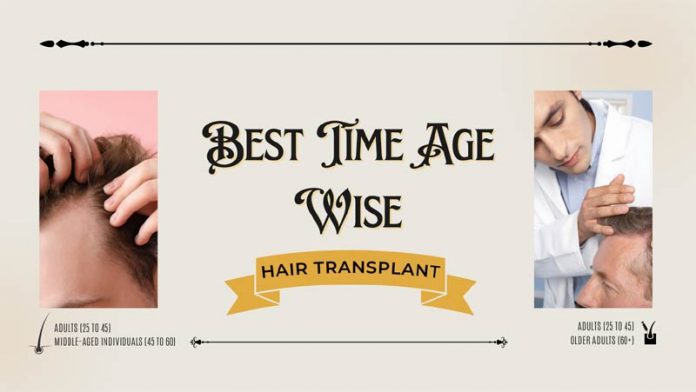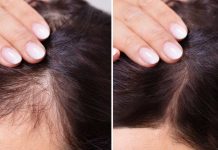Hair transplantation is typically considered more successful compared to over-the-counter hair restoration products. Almost 20 to 80 percent of transplanted hair is found to fully grow back in an estimated three to six months after a hair transplant session.
Consider These Factors Before Hair Transplantation
1. Realistic Expectations
There are many things to be considered before undergoing a hair restoration operation. And to top it all, check out if your expectations are realistic. Remember that a surgeon can only do what is physically possible. A hair transplant surgery for some patients with advanced hair loss may not be the best option for delivering the expected results.
And then remember that the surgical hair restoration process is not an ideal choice in a small number of cases. It is always better and more realistic to evaluate the disadvantages of hair transplantation in your case before undertaking a procedure.
2. Limitations of Hair Transplantation
Recognize the fact that the hair transplantation operation will not in any way influence or stop hair loss of non-transplanted hair. The results of a hair transplant are lifelong. But it does not prevent hair loss from affected follicles that were not transplanted. And were already present in the recipient areas before the hair restoration procedure.
Moreover, repeat surgery may be required in 5 to 8 years to counter progressive hair loss. Your surgeon will inform you of all possibilities before conducting a procedure.
3. Preparation for the Procedure
Know that you may need to trim off your hair before a hair transplant operation. Only then will a surgeon have access to the donor’s hair and be able to extract the donor grafts for the procedure. In some cases, the donor area at the back of the head will be trimmed to achieve the best possible results.
You must also follow the necessary aftercare instructions after the operation. This may need to be followed daily for at least two weeks following the transplant. The procedure’s results largely depend on how well you prepare to commit to these instructions.
4. Results and Patience
Last but not least, admit that hair restoration results take time. You will only be able to see the full effects of hair transplantation after 12 months following an operation. And these depend upon individual biological factors as well. You will need to have some patience to see through the whole process.
Hair Transplant Best Age – Categories
The most advisable age for transplantation ranges in-between 25 years to 75 years. Hairline receding in the 20s is not ideal for hair restoration since these patients tend to lose hair even after transplantation with age.
Patients should, therefore, consider surgery when they have turned 25 or older. Younger patients should consider hair loss medications first to stabilize hair loss. Only then should they go for hair transplant surgery. Hair transplantation operation should only be considered when hair loss has stabilized.
Teenagers and Young Adults (Under 25)
Although they become eager, patients experiencing balding at 20 or under 25 years should not run for cover and undertake the hair restoration procedure. It is not advisable since hair loss is a progressive condition. Hair loss in 20 years old male patients undergoing the hair transplantation procedure tends to leave behind a permanent strip of transplanted hair, which looks highly abnormal. Patients experiencing hair loss should at least wait 25+ years for the surgeon to understand and comprehend the pattern before undertaking a successful operation.
People with premature baldness might be allured to get hair transplants by looking at celebrity hairlines. However, the early transplant might deplete the donor’s hair supply and affect the chances of getting a hair transplant. Due to the progressive nature of premature hair loss, it is essential to let the condition stabilize and then go for surgery. Doctors should explain the patient’s pros and cons of the transplant so that they can make informed decisions. It is suitable for their long-term well-being and avoids ineffective surgeries (source).
Adults (30 to 45)
Baldness commonly starts for both males and females between the ages of 25 and 40 (Source). The hair transplant surgeon generally perform procedures only on individuals over 25 years of age. Younger patients often have uncertain future hair loss trajectories and typically hold unrealistic expectations (Source). The procedure depends on the severity of hair loss and the patient’s facial characteristics. And none of these factors can be entirely determined for younger patients below 30 years of age. The best time to undergo a hair transplant operation for early balding 20 years old male patients to ensure a natural appearance is between 30 to 45 years of age when the severity of the condition is fully exposed. The most recommended age for undergoing a transplant is around 35+ years of age.
Middle-Aged Individuals (45 to 60)
As long as you are healthy and have sufficient hair in the donor area, you are never too old or have any specific age limit for hair transplant surgery. Follicles from the occipital region of the head are usually used in the procedure. Middle-aged individuals between 45 to 60 years of age are excellent subjects to undergo hair transplant surgery. Moreover, hair restoration procedures within this period hold up best over the long term, although some hair follicles stop producing new hair altogether due to aging and environmental changes.
Older Adults (60+)
Many men are usually bald around 60 years of age. And age as such does not exclude individuals above 60 years of age to undergo hair transplantation. Moreover, men are rarely considered ‘too old’ to undergo hair restoration treatment. Older men between 60 to 75 years of age can expect excellent results from first-time hair transplantation. However, your hair follicles may thin as you age, primarily because of dryness, breakage, and other age-related damage, including deteriorating levels of the male hormone testosterone.
Importance of a Professional Evaluation
The physician will determine which classification a subject will fit into after evaluating the causes of androgenetic alopecia. Measuring hair density within the donor area will be taken up before deciding upon the design and the number of grafts required for treatment. These critical variables will help resolve who is a good candidate for hair transplant surgery.
About 6,50,000 individuals from all parts of the world choose to get a hair transplant every year. And almost 85 percent of these are men. The procedure with the latest technologies is safe, with fast recovery and minimal side effects. Then there is no age limit as such for hair transplants. And the treatment is a perfect and permanent solution for hair thinning.









